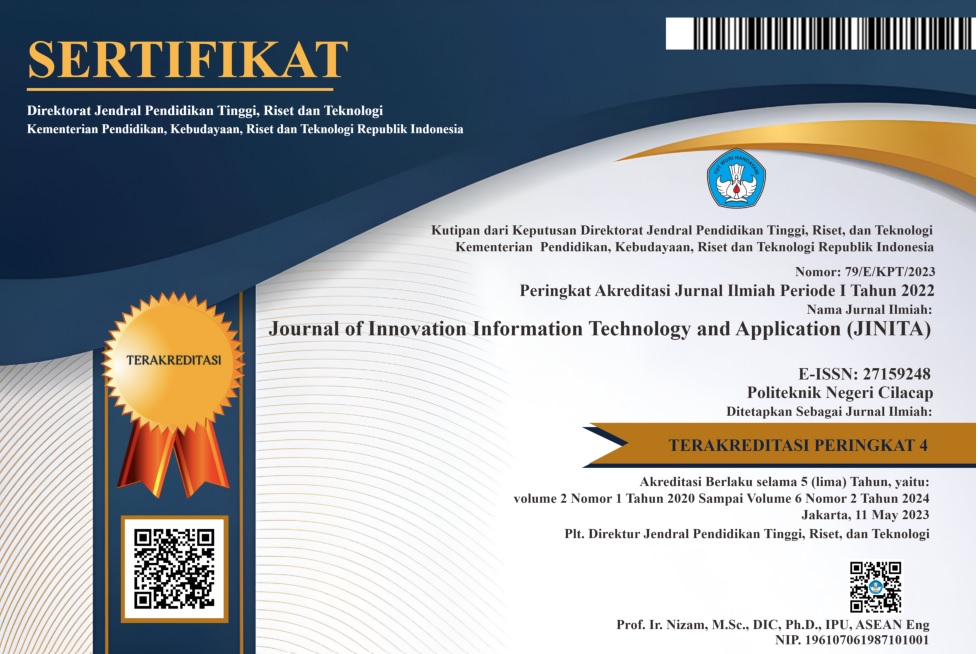Clustering Productive Palm Land using the K- Means Clustering Algorithm
 Abstract views: 113
,
Abstract views: 113
,
 pdf downloads: 130
pdf downloads: 130
Abstract
Indonesia is a country with a tropical climate that has many oil palm plantations. CV. Alkema Deo is one of the companies that manage oil palm plantations in Sampit City, East Kotawaringin Regency, Central Kalimantan. CV. Alkema Deo was founded in 2016 and has two plantation locations located on Jl. General Sudirman Km. 18, East Kotawaringin and Seibabi Village, Telawang District, East Kotawaringin. In this study, a qualitative approach was applied using a descriptive research pattern. In qualitative research, data is obtained from sources using various data collection techniques. Research using qualitative methods emphasizes the analysis of thought processes related to the dynamics of the relationship between observed phenomena, and always uses scientific logic. Based on the results of research for authors on a CV. Alkema Deo, the use of Excel in companies is quite good at processing data, but on a CV. Alkema Deo does not yet have land groupings based on productivity levels, so it is difficult to see the level achieved in 6 months based on the set target, and daily production control in terms of area and block area. Data obtained from CV. Alkema Deo is grouped based on area, block, and productivity. Application of data mining for grouping productive oil palm land on a CV. Alkema Deo with 4 variables, namely: land area, length, average production yield, percentage of achievement using the K-Means Algorithm to produce three clusters, namely 8 blocks or 50% including the high productive group (C2), 1 block or 6% blocks including the medium productive plantation group (C1), and 7 blocks or 44% including the small productive plantation group (C0).
References
A. Syahrial, S. Prayoga, and W. D. Hidayat, “Pengelompokan Lahan Sawit Produktif Menggunakan Metode K-Means Clustering Pada PT Kasih Agro Mandiri,” 2021.
S. Sadya, “Perkebunan Kelapa Sawit Indonesia Capai 14,62 Juta Ha pada 2021,” dataindonesia.id, 2022. https://dataindonesia.id/agribisnis-kehutanan/detail/perkebunan-kelapa-sawit-indonesia-capai-1462-juta-ha-pada-2021 (accessed Dec. 05, 2022).
Tim Publikasi, “Kotawaringin Timur, Kabupaten dengan Lahan Sawit Terluas di Indonesia,” https://databoks.katadata.co.id/, 2019. https://databoks.katadata.co.id/datapublish/2019/10/24/kotawaringin-timur-kabupaten-dengan-lahan-sawit-terluas-di-indonesia (accessed Oct. 24, 2019).
B. Poerwanto and R. Y. Fa’rifah, “Algoritma k-means dalam mengelompokkan kecamatan di tana luwu berdasarkan produktifitas hasil pertanian,” J. Chem. Inf. Model., vol. 53, no. 9, pp. 1689–1699, 2019.
S. Junia Sindy, “Penerapan Metode K-Means Clustering Untuk Menentukan Status Mutu Produksi Buah Kelapa Sawit Pada PT Sawit Asahan Indah (SAI),” Diss. Univ. Pasir Pengaraian, 2020.
K. Sawit, D. Ppks, R. E. Marpaung, J. T. Hardinata, and R. A. Nasution, “Penerapan Algoritma K-Means Dalam Mengclustering Kualitas Bibit,” vol. 1, no. 1, pp. 7–15, 2022.
I. M. Pulungan, M. Fauzan, and A. P. Windarto, “Implementasi Algoritma K-Means Clustering dalam Menentukan Blok Tanaman Sawit Paling Produktif,” Prosiding Seminar Nasional Riset Information (Science), vol.1 no.3, pp. 338–348, September 2019, doi: 10.30645/senaris.v1i0.39.
S. Hajar, A. A. Novany, A. P. Windarto, A. Wanto, and E. Irawan, “Penerapan K-Means Clustering Pada Ekspor Minyak Kelapa Sawit Menurut Negara Tujuan,” Seminar Nasional Teknologi Komputer & Sains (SAINTEKS), pp. 314–318, 2020.
A. N. Am and S. Defit, “Penentuan Mutu Kelapa Sawit Menggunakan Metode K-Means Clustering,” vol. 5, no. 3, pp. 1–9, 2019.
T. Informatika, “Analisis Clustering untuk Mengetahui Tingkat Potensi Tanaman Kelapa Sawit Berdasarkan Luas Tanaman Menggunakan Algoritma K-Means pada Badan Pusat,” vol. 3, no. 1, pp. 110–123, 2019.
Y. I. Febiola, I. Cholissodin, and C. Dewi, “Peramalan Hasil Panen Kelapa Sawit Menggunakan Metode Multifactors High Order Fuzzy Time Series yang Dioptimasi dengan K-Means Clustering ( Studi Kasus : PT . Sandabi Indah Lestari Kota Bengkulu ),” vol. 3, no. 12, 2019.
W. E. Sari, M. Muslimin, A. Franz, and P. Sugiartawan, “Deteksi Tingkat Kematangan Tandan Buah Segar Kelapa Sawit dengan Algoritme K-Means,” SINTECH (Science Inf. Technol. J., vol. 5, no. 2, pp. 154–164, 2022, doi: 10.31598/sintechjournal.v5i2.1146.
and E. M. Pratama, Faiq Husain, Agung Triayudi, “Data mining k-medoids dan k-means untuk pengelompokan potensi produksi kelapa sawit di indonesia,” vol. 07, pp. 1294–1310, 2022.
R. B. Ardi, F. E. Nastiti, and S. Sumarlinda, “Algoritma K-Means Clustering untuk Segmentasi Pelanggan ( Studi Kasus : Fashion Viral Solo ),” vol. 9, no. 1, pp. 124–131, 2023.
N. Mirantika, “Penerapan Algoritma K-Means Clustering untuk Pengelompokan Penyebaran Covid-19," Jurnal Nuansa Informatika, Volume 15 Nomor 2 , Juli 2021, vol. 15, pp. 92–98, 2021.
E. F. Himmah, M. Widyaningsih, and M. Maysaroh, “Identifikasi Kematangan Buah Kelapa Sawit Berdasarkan Warna RGB Dan HSV Menggunakan Metode K-Means Clustering,” J. Sains dan Inform., vol. 6, no. 2, pp. 193–202, 2020, doi: 10.34128/jsi.v6i2.242.
Copyright (c) 2023 Geofanny Widianto Sihite

This work is licensed under a Creative Commons Attribution 4.0 International License.
Authors who publish with this journal agree to the following terms:
- Authors retain copyright and grant the journal right of first publication with the work simultaneously licensed under a Creative Commons Attribution License that allows others to share the work with an acknowledgement of the work's authorship and initial publication in this journal.
- Authors are able to enter into separate, additional contractual arrangements for the non-exclusive distribution of the journal's published version of the work (e.g., post it to an institutional repository or publish it in a book), with an acknowledgement of its initial publication in this journal.
- Authors are permitted and encouraged to post their work online (e.g., in institutional repositories or on their website) prior to and during the submission process, as it can lead to productive exchanges, as well as earlier and greater citation of published work (See The Effect of Open Access).
















